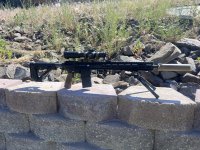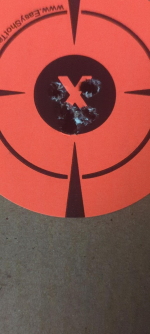Thanks for reaching out, I look forward to catching the email and getting some more details. Typically anytime there is an issue we'll conduct a RMA to try and nail down exactly what's happing.
While I wait, I think the best way to answer what I can is to walk through the LPR specs which I think is a little misunderstood. And just to be clear it's possible the receivers in this particular case could be out of spec, I don't think it would be unlikely...but again I can't say for sure without looking at it so everything that follows is just for better understanding in the interim.
So first of all, regarding the upper to lower fitment, let me say this has no impact on the mechanical accuracy. I feel like this gets argued a lot across the internet but in fact some of the best shooting LPRs cataloged in testing to date are "lose" arrangements.
We do however understand that the "feel" of a tight fit is physiologically boosting, I remember having a wobbly A2 back in the day and it wasn't confidence inspiring. Thus, we specifically hold our lug/recess tolerances on the LPR to what is conceivably practical. As an example the M16 TDP (technical data package) which is the standard industry specifications for forged receivers (note there are some slight variations to this over the years but this was the tightest listed dimensions I've seen listed), the maximum thickness of the lugs is 0.499" and a minimum of 0.496 while the recess has a tolerance minimum of 0.500 and maximum of 0.504 meaning traditional you'll have anywhere from +0.001 to +0.008 gap fitment between receivers. Again, this is the tightest of the official revisions I've seen personally, it only gets loser from there.
The RD15 departs from the TDP spec in that our lugs/recess are held to have anywhere from +0.000 to +0.003 gap fitment between receivers. This drastic improves the fit and feel of the rifle for the end user but still allows for realistic production rates. The reality is you could attempt to tighten tolerances but between machining and anodizing you would probably only be able to realistically narrow the gap to 0.002". And of course, doing so would drastically up your rejection rate, material loss and machine time per unit, never mind the fact that you wouldn't have too many friends in the machine shop. Last but not least the cross-compatibility aspect of the LPR of folks wanting to put uppers on lowers would become even more problematic.
This of course means some rifles inviably fall into the 0.003 gap range and will have some minor play. This is why you see a lot of companies introducing tensioning screws and such things into their designs. Personally, I think there is a line of dimensioning returns somewhere close by as again the actual effect on performance isn't. I suppose an inline revision is feasible should the need be presented but hope this gives a little more clarity and context to the dimensional relationship of the LPR‘s lug and receiver interface.



